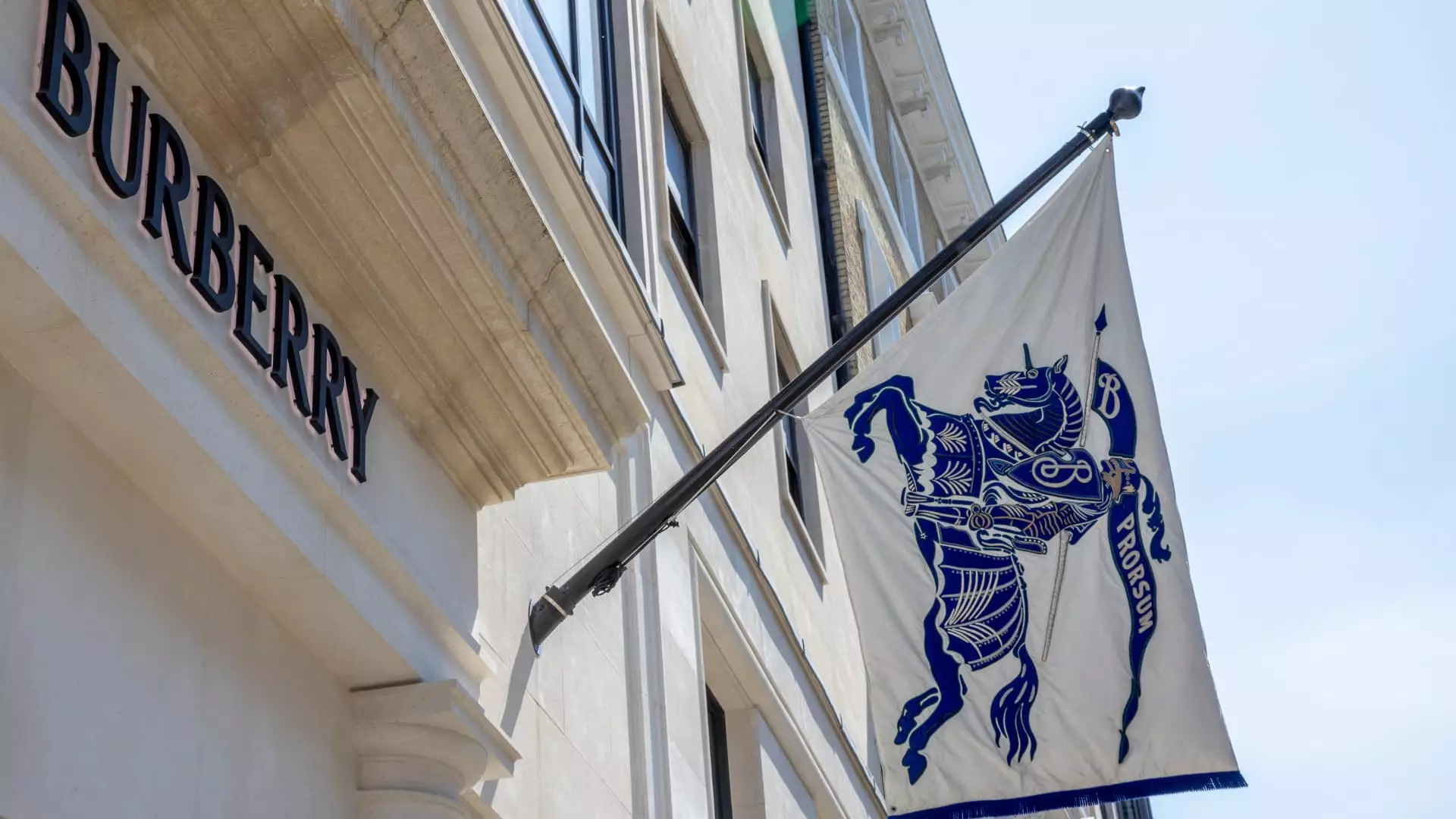Burberry, an icon of British fashion, finds itself at a crossroads, grappling with the formidable winds of economic change and shifting consumer preferences. Announcing significant organizational changes, the brand aims to reshape its future amid continuous declines in sales—a 6% dip over the last quarter and a staggering 12% across the fiscal year. Such figures, while slightly better than analysts’ worst fears, still paint a grim picture for a luxury label that once soared above its competitors. The audacious plan to cut around 1,700 jobs globally underscores the severity of the issue. This isn’t merely a restructuring; it’s a desperate cry for survival.
The Reality of Declining Sales
While a sales drop of 6% might seem tolerable compared to an expected 7%, it masks a deeper malaise within the brand. Sales declined across all markets, most notably in the Asia-Pacific region, which has been a cornerstone of luxury consumption in recent years. The news that the Americas, previously buoyed by positive performance, swung to a 4% loss only deepens the sense of urgency. For a brand traditionally seen as synonymous with luxury and exclusivity, these figures shed light on a troubling trend: consumers are not just tightening their belts—they’re re-evaluating their loyalties.
Visibility Behind a Veil of Optimism
In the face of this harsh reality, Burberry’s CEO, Joshua Schulman, exudes an almost palpable optimism, resisting the overwhelm of current challenges. While his statements reflect a commitment to turning the ship around, they also raise questions about the feasibility of such a turnaround in an increasingly unpredictable macroeconomic climate. “Sustainable profitable growth,” he asserts, but how realistic is this assertion amidst the tightening geopolitical stranglehold and potential tariff shocks? Schulman’s vision, albeit ambitious, appears to lean heavily on unfounded optimism rather than pragmatic adjustments to a fluctuating market landscape.
The Geopolitical Landscape: A Double-Edged Sword
Burberry’s fate is inextricably tied to the prevailing geopolitical tensions, which not only dampen consumer sentiment but threaten to inflate operational costs through potential tariffs. In a world where luxury goods are frequently targeted during trade disputes, the lack of clarity on U.S. tariffs places an additional burden on the brand. It’s crucial for companies like Burberry to navigate this tumultuous landscape with caution, yet they must also adopt innovative strategies to re-engage consumers who are increasingly sophisticated and discerning—looking for brands that not only sell luxury but embody resilience and ethical values.
Finding a Path Forward
For Burberry, the task ahead is monumental. It will require more than just layoffs and cost-cutting measures to recapture market share. The brand must foster genuine connections with consumers by redefining what luxury means in the modern context. As sustainable practices and transparency gain momentum in the luxury sector, Burberry has the potential to emerge stronger if it embraces these changes. The core of luxury must evolve from extravagance to authenticity and social responsibility, ensuring that consumers don’t just buy products—they buy into a brand ethos that reflects their own values.
The question remains: Can Burberry adapt swiftly enough to not just survive but thrive in this new landscape? The world is watching, and the luxury giant’s future hangs in the balance.

